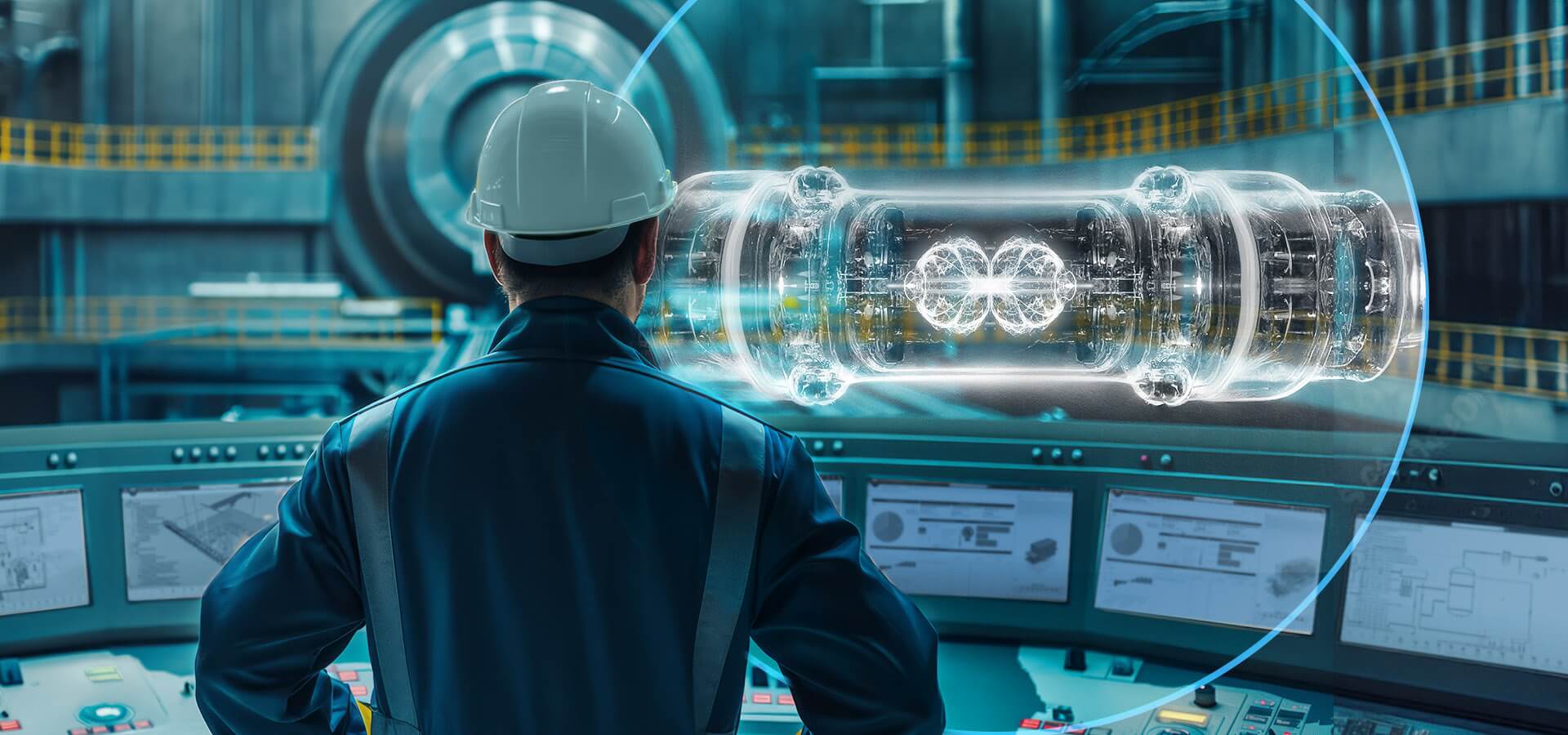A Low-Carbon Future With Efficient Nuclear SMR Projects
Traceability, continuity and digital configuration management are the key factors contributing to the success of SMR projects.
The Next Small Thing in Advanced Nuclear
The goal of achieving net-zero emissions by 2025 creates pressing urgency for an overhaul of our energy systems, where decarbonized power generation should be a priority moving forward. A big step towards energy transition starts with small nuclear plants, which are low-carbon, cost-efficient nuclear generators that enable energy decentralization. As a decentralized energy source, small modular reactors can be seamlessly integrated into the energy grid with other renewable energy sources.
With their scalability and passive safety features, small modular reactors can address the limitations of traditional nuclear reactors, while also being a more attractive investment profile compared to the latter. The adoption of SMR technologies will revolutionize the nuclear energy landscape as it adheres to the non-proliferation efforts for its peaceful use of nuclear energy.
Here's what SMRs can offer energy companies:
7,200,000 kWh
of energy produced per day
Up to 300MW(e)
per unit of power capacity
Only requires refueling every
3 to 7 years
Sustainable Nuclear SMR Projects With Optimized Planning
Like most construction projects, proper planning for nuclear SMR projects plays an important role for timely and efficient project delivery. A key component not to be overlooked is the meticulous coordination of on-site logistics that directly supports the supply chain during the construction of small nuclear plants.
The modularity aspect of SMRs allow plant parts or components to be manufactured off-site to keep production costs low. Upon completion, the transportation of SMR plant parts that are manufactured off-site requires effective coordination to ensure each component arrives on-site precisely when needed to prevent delays. A synchronized logistics plan with detailed scheduling and active communication helps streamline the process, reduce potential bottlenecks and enhance overall project efficiency.
Proper planning and management are crucial to guarantee the safety, efficiency and viability of small nuclear plants as a sustainable energy source. Leveraging the optimized planning capabilities on the right end-to-end platform will make all the difference to your project outcome by ensuring traceability, continuity and digital configuration management.
The Infrastructure and Technology of Nuclear SMR Projects
The Strategic Guide To Maximizing Efficiency in SMR Projects
Empower design, simulation, collaboration and end-to-end scaling, all on one platform.
Seamless Project Collaboration
All project aspects of a small nuclear power plant construction require seamless collaboration between multiple stakeholders including designers, manufacturers, engineers and technicians. This is especially true for supply chain management, safety and quality assurance and project management.
The collaboration features of the 3DEXPERIENCE platform empower project owners to take control of nuclear SMR projects by ensuring traceability, continuity and digital configuration management. This further facilitates informed decision-making, and operational optimization while keeping projects cost-efficient through the following aspects:
- Related data connectivity supports the compliance demonstration with stringent quality requirements
- Potential project risks and issues are accessible across teams for clear visibility and accountability
- The advanced ability to monitor overall performance and project schedule while enabling effective decisions
- Coordinated logistics through active communication and updates helps overcome supply chain challenges
Deliver End-To-End Nuclear SMR Projects Successfully
With support from local governments, large scale deployment of SMR technologies by early 2030s can serve as a carbon free energy alternative while bringing economic benefits to global communities. Nuclear companies can pioneer the net-zero movement by scaling their advanced nuclear operations and making project efficiency a non-negotiable priority in nuclear SMR projects.
Virtual twin technology is revolutionizing the field of advanced nuclear reactors by optimizing nuclear SMR projects from the deployment phase. It is also used to drive other similar sustainable energy infrastructure, including carbon capture technology and offshore wind energy. The power of virtual twin is demonstrated through the collaboration and simulation capabilities on the 3DEXPERIENCE platform. Commercial nuclear companies can leverage Dassault Systèmes' end-to-end solution to ensure project success through traceability, continuity and digital configuration management.
Discover more about designing a power plan for a smooth energy transition
Get ready to accelerate the shift to clean energy for a brighter tomorrow.
